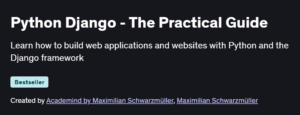What will you learn in Understanding the Basics of Tailwind CSS Course
Apply Tailwind’s utility-first classes to rapidly style components without writing custom CSS
Configure and customize the default Tailwind theme to match your design system
Build responsive layouts using Tailwind’s mobile-first breakpoints and state variants
Extract reusable component classes with
@applyfor maintainable code
Program Overview
Module 1: Introduction & Setup
⏳ 20 minutes
Topics: What is Tailwind CSS; installing via npm/Yarn; configuring
tailwind.config.jsHands-on: Scaffold a new project and verify Tailwind styles in the browser
Module 2: Utility-First Workflow
⏳ 30 minutes
Topics: Core utility classes (layout, spacing, typography, colors)
Hands-on: Style a basic landing page layout using only utility classes
Module 3: Customization & Theming
⏳ 25 minutes
Topics: Extending the default theme, custom colors, fonts, and spacing scales
Hands-on: Define a custom color palette and apply it to components
Module 4: Responsive Design & State Variants
⏳ 20 minutes
Topics: Mobile-first breakpoints (
sm,md,lg, etc.); hover, focus, and active variantsHands-on: Build a responsive navigation bar with interactive states
Module 5: Extracting Components & @apply
⏳ 25 minutes
Topics: Using
@applyin CSS, creating design tokens, and component classesHands-on: Refactor repetitive utilities into reusable component classes
Module 6: Optimization & Plugins
⏳ 20 minutes
Topics: PurgeCSS integration, build optimizations, using official plugins (forms, typography)
Hands-on: Configure purge paths and add the Tailwind Forms plugin
Module 7: Final Project – Component Library
⏳ 40 minutes
Topics: Organizing utility classes into a scalable component library
Hands-on: Build and document a small set of reusable UI components
Get certificate
Job Outlook
Front-end developers using modern CSS frameworks earn an average of $116,452 per year in the U.S. as of June 2025
Employment of software developers is projected to grow 17% from 2023 to 2033, faster than average
Proficiency with Tailwind CSS is increasingly sought after in startups, agencies, and large enterprises building responsive UIs
Skills in utility-first CSS complement roles in UI engineering, design-to-code specialization, and freelance web development
Specification: Understanding the Basics of Tailwind CSS Course
|
FAQs
- Tailwind can be installed via npm and configured for React, Vue, or Angular projects.
- Utility classes work seamlessly in JSX or Vue templates.
- Enables rapid prototyping of UI components without custom CSS.
- Supports responsive design using framework-specific breakpoints.
- Can be combined with component libraries for reusable UI modules.
- PurgeCSS removes unused classes from production builds, reducing file size.
- Encourages reusable utility classes, avoiding redundant CSS rules.
- Reduces specificity conflicts common in large CSS files.
- Inline classes eliminate the need for additional stylesheet HTTP requests.
- Works well with JIT mode to generate only required styles dynamically.
- Component extraction via
@applyallows consistent, maintainable design. - Supports theming and customization for brand-specific UI systems.
- Works with modern build tools and frameworks for enterprise setups.
- Integrates well with design tokens for scalable styling.
- Encourages consistent, responsive layouts across multiple teams.
- Official plugins like Forms, Typography, and Aspect Ratio simplify styling.
- Custom plugins allow creation of reusable utility classes.
- Enhances workflow by reducing repetitive CSS tasks.
- Compatible with PurgeCSS to keep production builds small.
- Supports dynamic and state-based styling for interactive components.
- Front-end developers can build responsive UIs faster with Tailwind.
- Skills are highly sought after in startups and design-focused agencies.
- Useful for freelance projects, rapid prototyping, and client work.
- Complements JavaScript frameworks and UI/UX design roles.
- Enhances resume with modern CSS framework expertise.





